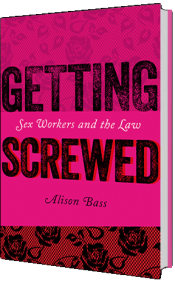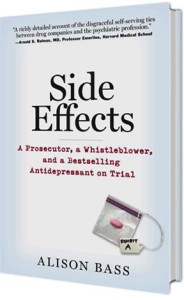I was hesitant to weigh in at first when I learned that Brown University’s School of Medicine had decided not to pressure a psychiatric journal to retract the seriously flawed Paxil study that I wrote about in Side Effects. After all, Brown has been covering up misconduct by the study’s principal investigator, Martin Keller, for decades; so why would it suddenly change its tune now?
What bothers me as much as Brown’s refusal to do the right thing (and provide an ethical example to its students) is the stance that the Office of Research Integrity at the Department of Health and Human Services has taken in response to the study. As I and many others have noted, researchers misrepresented data in study 329 to make Paxil look safer and more effective than it really is — see here, here and here.
The Paxil study, which was published in August 2001 by the Journal of the American Academy of Child and Adolescent Psychiatry, purported to show that Paxil was safe and effective in treating depression in adolescents, when in fact actual data from the trial showed the opposite. Even the FDA concluded that study 329 was a negative finding — that it failed to show Paxil was more effective than a placebo.
So what reason does the federal Health and Human Services’ Office of Research Integrity give for why they won’t investigative allegations of scientific misconduct here? As Pharmalot reports, the director of that office falls back on old rhubarb: a statute of limitations. In a letter to Jon Jureidini, the Australian researcher who has led the effort to win a retraction, John Dahlberg writes: “…allegations of falsification, fabrication or plagiarism must be made within six years of the alleged misconduct…”
Yet investigators for the FDA and HHS were well aware of potential misconduct with regard to study 329 before any statute of limitations expired. Not only had I been in touch with federal officials asking questions about serious flaws in the study while I was doing research for my book in 2006 and 2007 (my book was published in June 2008), but Jureidini and Leemon McHenry published a paper in early 2008 pointing that the study 329’s researchers had changed the primary outcome measures and skewed data in other ways to make Paxil look safer and more effective than it really was. As I mentioned earlier, the FDA had decided as far back as 2004 that study 329 didn’t show efficacy despite its published claims.
So all the clues to scientific misconduct were there well before any six-year statute of limitations. This is why Dahlberg’s argument seems completely specious to me.
As for Brown University School of Medicine, its dean should be hanging his head in shame. Joel Lexchin, a professor of health policy at York University in Toronto and one of the academics who signed the letter to Brown University pressing for a retraction, says it best, according to Pharmalot:
“I find it very disturbing that a university that is suppose to be standing up for the highest academic values is unwilling to take any action when its faculty members violate those values.”



Hi Alison, here is the relevant regulation, in pertinent part. If in fact HHS received allegations of research misconduct within six years (i.e., sometime in 2007) perhaps documentation of that fact could be provided to them. In addition, as you can see there are two exceptions to the six-year time limitation. Perhaps one or both of those exceptions apply.
Marilyn
42 C.F.R. § 93.105 Time limitations.
(a) Six-year limitation. This part applies only to research misconduct occurring within six years of the date HHS or an institution receives an allegation of research misconduct.
(b) Exceptions to the six-year limitation. Paragraph (a) of this section does not apply in the following instances:
(1) Subsequent use exception. The respondent continues or renews any incident of alleged research misconduct that occurred before the six-year limitation through the citation, republication or other use for the potential benefit of the respondent of the research record that is alleged to have been fabricated, falsified, or plagiarized.
(2) Health or safety of the public exception. If ORI or the institution, following consultation with ORI, determines that the alleged misconduct, if it occurred, would possibly have a substantial adverse effect on the health or safety of the public.
I am guessing the studies are still used as evidence based medicine to produce clinical guidelines.
I also am guessing that the next thing you’ll be told is: “You are applying today’s criteria to studies that were done yesterday. That isn’t fair.”
Good luck to you.
Thanks, Marilyn! It seems to me (as Bradley Evans pointed out in his comment) that the six-year statute of limitations doesn’t apply in this case since this Paxil study continued to be cited in the research literature more recently than 2008. So the “subsequent use exception” would definitely seem to apply here. Which confirms my speculation that the director of the ORI was looking for an excuse to not investigate this heavily flawed study.
Excellent point! I went looking for how the ORI was supposed to get involved, but couldn’t find much. Of course they should have jumped on it when you and others told them. Marilyn’s points are strong and may offer Healthy Skepticism a way to leverage HHS into doing its job. Where
wereare the grown-ups?